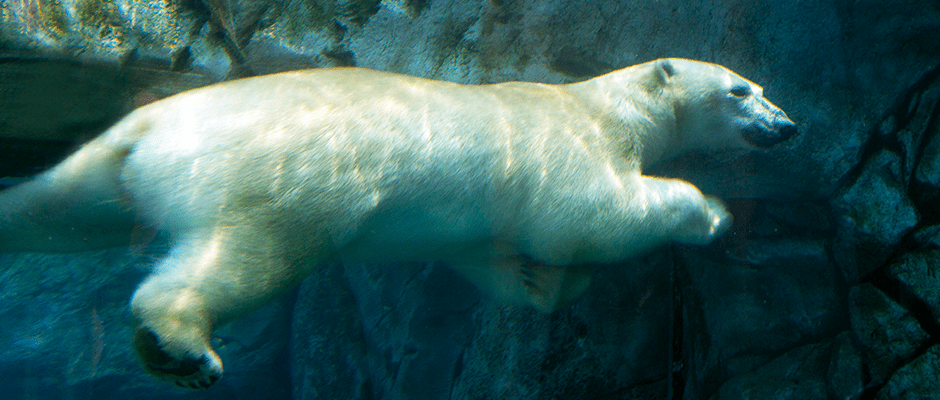Share this article
Up Close with Polar Bears
Have you ever walked through an underwater glass tunnel surrounded by polar bears swimming overhead or come face to face with a polar bear purring affectionately behind its outdoor enclosure?
Attendees who took advantage of the field trip to the Leatherdale International Polar Bear Conservation Centre as part of The Wildlife Society’s 22nd Annual Conference in Winnipeg not only had these unique experiences but saw behind the scenes what it’s like for the magnificent animals inside the conservation center.
Polar bear experts discussed the history of polar bear conservation as well as how and why the bears rescued from Churchill are transported to the conservation center next to the nearby Assiniboine Park Zoo. When cubs are orphaned, often because of environmental factors, they can die without their mothers. Some of these bears are candidates to be rescued and brought to the conservation center where they can be rehabilitated and later relocated.
Field trip attendees heard from Bob Windsor, Churchill district supervisor with Manitoba Conservation and Water Stewardship and an officer who retrieves polar bears from Churchill to be considered for the transition program at the conservation center in Winnipeg — an important but challenging job. “Some nights I don’t get much sleep because the phone is ringing about another bear,” Windsor said, adding that his job is to protect the safety of the people as well as the welfare of the bears.
Once a bear is deemed a candidate for the transition program, it’s then held in quarantine for 30 days inside the conservation center before it is relocated. Field trip attendees had the chance to check out the icy cold holding facility that’s designed to mimic the environment polar bears need to survive.
Although individuals working at the conservation center give the captive bears water, ice or snow, they don’t provide food for them, mainly so the bears don’t relate people with food but also because the animals can live off their fat reserves. The bears are also allowed to roam from their cells to three different outside areas. After bears are rehabilitated, Windsor flies the bears back on helicopters to wherever they find that the first ice had occurred. On average, Windsor said they relocate 45 polar bears in a year.
Journey to Churchill
After learning about the reintroduction program, attendees experienced part of “Journey to Churchill” — an exhibit at Assiniboine Park Zoo that featured a glass enclosed tunnel under water where polar bears could be seen nosediving into the water and toward gazing wildlifers and other onlookers. The zoo has seven polar bears total and four bears that were orphaned before being brought into the zoo including a four-year-old that recently bit a local Churchill man who warded him off with the light of his cell phone one night. Attendees also had an opportunity to view the bears outside. One bear stayed close to the front of the viewing area where the people were. It was licking the metal gate separating it from the people and making a purring sound. Attendees learned that this behavior was to show affection to the people visiting it.
The point of this exhibit according to Bill Watkins, a biodiversity conservation biologist for Manitoba Conservation, is to “inform people about climate change.” If people want to continue to observe the behaviors of these majestic animals — and possibly even study them, since many wildlife biology students were on the trip — it’s important to understand how environmental changes are affecting them. “If people don’t change their behavior, we could see the end of polar bears,” Watkins said.
Header Image: A polar bear at the “Journey to Churchill” exhibit swims through the water surrounding a glass enclosed tunnel that visitors can walk through. Image Credit: Roman Boldyrev, licensed by cc 2.0








